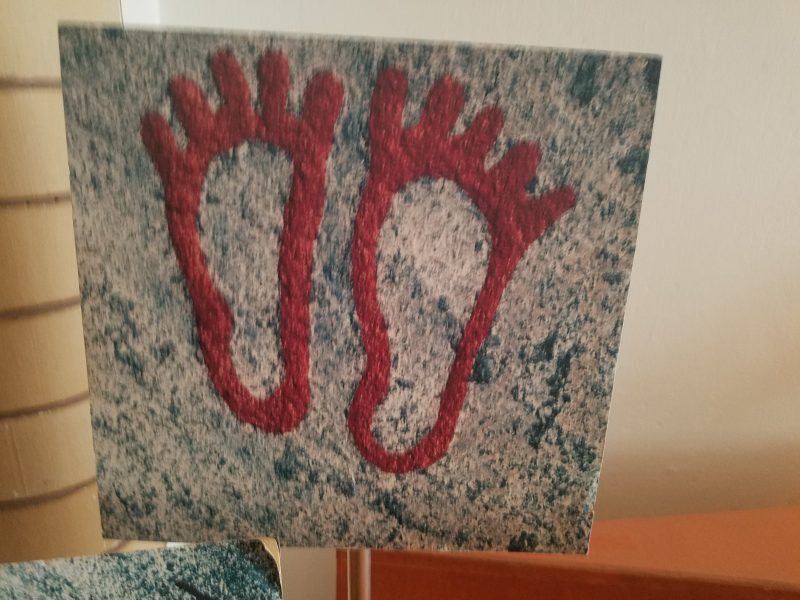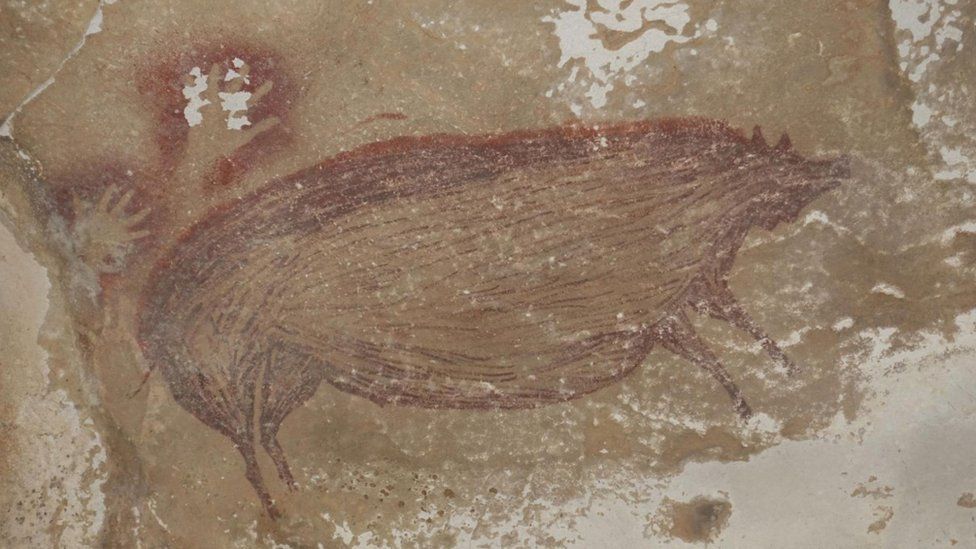
It is nearing the end of 2021 and the year flew by as I was engrossed in delivering online art instruction to kūpuna through Palama Settlementʻs art program. I went through intense inner work as well to up my game in my prayer life, my relationships, and my artistic practice. A subject of fascination for me has been how did our ancestors do it?
I have been studying the findings of archaelogical work on ancient art and last year was serendipitously happy to discover rock art while walking out in the Red Rock National Park on a family visit in Las Vegas Nevada. We saw petroglyphs and red iron oxide paintings on the rocks there. Iʻve been searching out and studying the petroglyphs on trails in Hawaiʻi and reading about the findings of art in India, Indonesia, Spain, etc.

Making marks, telling stories, these were already highly developed by our early human ancestors and even Neanderthals. Most people have heard of the paintings in France, but the oldest seem to be in Indonesia, although some maintain it is Spain with Neandethal art predating the arrival of homo sapiens into Europe some 40,000 years ago.
The bible says after a time, man began to call upon the Lord. There is some evidence that dates artifacts to 100,000 years ago when men began to make beads and other objects that suggest language and other symbolic thinking that could have led people to perceive God and call upon him.
Regardless of whether my idea is correct, I am still astounded by the artistry of the ancient art. The observation of their natural world, the craft in selecting and preparing the materials, and then the skill and artistic expression of the animals and stories and forms are my inspiration.